Pending Business: Talk Radio Questionnaire
By Steve Lapa
Lapcom Communications Corp
President
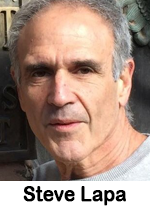 Time to thank the lawyers in the Donald Trump trial for once again proving beyond any doubt the power of talk radio.
Time to thank the lawyers in the Donald Trump trial for once again proving beyond any doubt the power of talk radio.
1. Sellers – Get ready for Mother’s Day and Christmas rolled into one.
2. Managers – Prepare a fresh new page in your talk radio media kit.
3. On-air talk radio talent – Don’t throw away that lottery ticket, your number could come in.
4. Media consultants – Hit the brakes on making TV as an automatic first choice for your political campaigns, we’ve got a story for you.
5. Owners – Play your cards right and that talk radio format may have jumped in value.
It has been widely reported that jurors selected for the Donald Trump-Stormy Daniels trial were presented a questionnaire with the following question, “Do you listen to talk radio?” “If so, which programs?” Now wait just a minute all you jury profilers out there or fans of the TV show “Bull.” This is big, but I have a few questions of my own:
1. Why would any lawyer be interested in the radio listening habits of a (potential) juror?
2. Why specify “talk radio?”
3. What’s with the need to know about specific programs?
4. What’s the definition of “listen?” Daily? How long?
Maybe it’s time to recognize just what all this means to great talk radio talent and marketers.
I’m sure by now you have figured out where this goes – influence – as in talk radio hosts, the original influencers.
The very nature of a jury selection questionnaire screening for talk radio listening and specific programs is fascinating. Did an attorney conclude that talk radio shows influenced a potential juror’s feelings, opinions, perceptions (the very currency of talk radio) when it comes to Donald Trump or Stormy Daniels or any other key player on the legal stage?
As every seller knows, talk radio talents were the original influencers and continue to drive sales every day. To the local sellers and managers in the New York DMA pitching Sid Rosenberg, Joe Piscopo, Mark Simone and the other great local talents, imagine experienced legal teams evaluating the influence of their daily shows on potential jurors. Same for the nationally syndicated talent heard in the New York DMA. Talk radio lives and is influencing in the Big Apple!
“Do you listen to talk radio?” “If so, which programs?” that line of questioning should now become part of your daily marketing testimonial. After all, if teams of well-respected lawyers feel talk radio listening can influence the decisions of jurors in one of the most historic cases ever to be tried in our country, imagine what talk radio can do for your advertisers!
Steve Lapa is the president of Lapcom Communications Corp. based in Palm Beach Gardens, FL. Lapcom is a media sales, marketing, and development consultancy. Contact Steve Lapa via email at: Steve@Lapcomventures.com.



 I asked ChatGPT: “Vendors are now offering radio stations a service that delivers advertising commercial copy generated by AI. Because AI draws from what’s already been done, this risks sound-alike scripts. Is there a list of commercial clichés users should instruct AI to exclude?”
I asked ChatGPT: “Vendors are now offering radio stations a service that delivers advertising commercial copy generated by AI. Because AI draws from what’s already been done, this risks sound-alike scripts. Is there a list of commercial clichés users should instruct AI to exclude?”
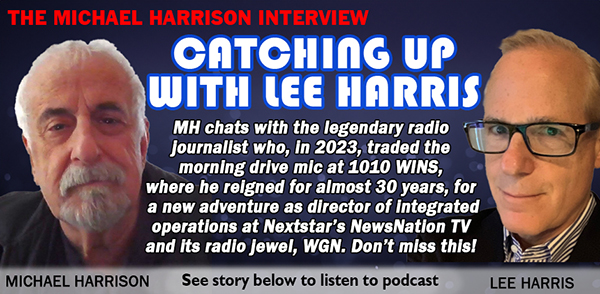
 Growing a brand is a memory game. Which message will a target consumer value, remember it and take it to the cash register? The answer is not complicated but it is complex.
Growing a brand is a memory game. Which message will a target consumer value, remember it and take it to the cash register? The answer is not complicated but it is complex.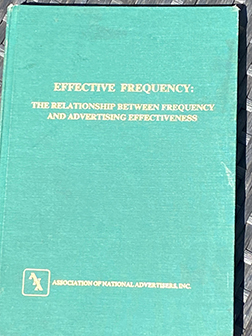 about all the science any of us have been tutored in on the subject of effective frequency.
about all the science any of us have been tutored in on the subject of effective frequency.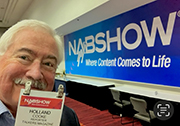 If you’re looking to jump-start – or optimize – your video interview technique, this session alone was worth the trip to Las Vegas. Washington-based video content strategist/producer/interviewer
If you’re looking to jump-start – or optimize – your video interview technique, this session alone was worth the trip to Las Vegas. Washington-based video content strategist/producer/interviewer 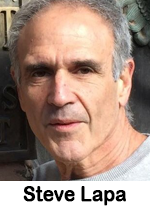 The media headlines are dizzying these days, yet they all share one common thread. See if you can solve this puzzle.
The media headlines are dizzying these days, yet they all share one common thread. See if you can solve this puzzle.
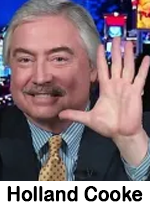 Having written thousands of commercials and promos, I’ve become a copy connoisseur. And, admittedly, a tough grader when it comes to delivery. Sell me and you’re good.
Having written thousands of commercials and promos, I’ve become a copy connoisseur. And, admittedly, a tough grader when it comes to delivery. Sell me and you’re good.
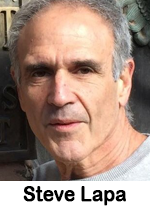 The work-life balance concept is up for a new spin. Let us start in California.
The work-life balance concept is up for a new spin. Let us start in California. It seems every hour Nielsen and Pierre Bouvard of Cumulus fame (formerly of Westwood One) put out a release stating that radio is just fine, thank you. Radio is more persuasive than TV, direct mail, streaming and print. Radio is a proven success for over 100 years. Most of the buildings housing Procter & Gamble were built on radio – not TV – advertising success. Happily, P&G realized radio’s clout and is now a dominant radio advertiser – again!
It seems every hour Nielsen and Pierre Bouvard of Cumulus fame (formerly of Westwood One) put out a release stating that radio is just fine, thank you. Radio is more persuasive than TV, direct mail, streaming and print. Radio is a proven success for over 100 years. Most of the buildings housing Procter & Gamble were built on radio – not TV – advertising success. Happily, P&G realized radio’s clout and is now a dominant radio advertiser – again!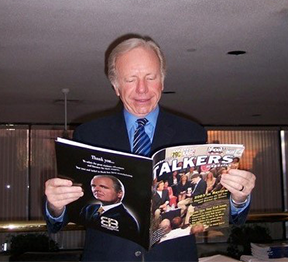 week’s installment of the award-winning PodcastOne series, “The Michael Harrison Interview.” The program includes an archived interview conducted with Lieberman in 2018 for the podcast which offers valuable insight into his perspective on the Electoral College and the presidency of Donald Trump among other historic issues. Harrison describes the late senator and former VP candidate as, “one of the last true American statesmen of the modern era.”
week’s installment of the award-winning PodcastOne series, “The Michael Harrison Interview.” The program includes an archived interview conducted with Lieberman in 2018 for the podcast which offers valuable insight into his perspective on the Electoral College and the presidency of Donald Trump among other historic issues. Harrison describes the late senator and former VP candidate as, “one of the last true American statesmen of the modern era.” 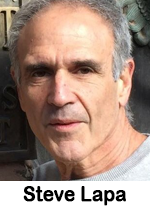 The thing about outstanding performance is there is one key trait in the performer we can all agree on. It was on full display in front of millions during the past two weeks. It shows up every time an athlete takes the game to new levels, or an artist moves us out of our seats and collective comfort zone.
The thing about outstanding performance is there is one key trait in the performer we can all agree on. It was on full display in front of millions during the past two weeks. It shows up every time an athlete takes the game to new levels, or an artist moves us out of our seats and collective comfort zone.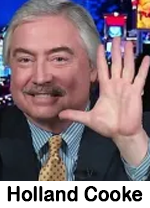 Pick a day, any day. At least one news item will have the little voice in your head hollering “TELL me you’re kidding!” After recent headlines, and as various plots thicken, that little voice might need a lozenge.
Pick a day, any day. At least one news item will have the little voice in your head hollering “TELL me you’re kidding!” After recent headlines, and as various plots thicken, that little voice might need a lozenge.
 Will video save the radio star? I hope so.
Will video save the radio star? I hope so.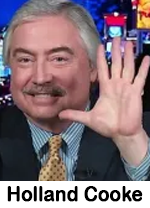 Before the bound copy arrived – at which point all work stopped – Arbitron would send “Advances.” Even those topline numbers ground things to a halt, and had some PDs doing cartwheels, others out on the ledge. ‘Seems quaint now.
Before the bound copy arrived – at which point all work stopped – Arbitron would send “Advances.” Even those topline numbers ground things to a halt, and had some PDs doing cartwheels, others out on the ledge. ‘Seems quaint now.
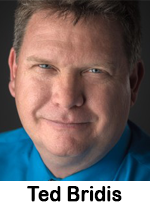 The headlines haven’t been kind to journalism lately. That recent
The headlines haven’t been kind to journalism lately. That recent 1. Financial solvency laws. Consolidation is not the problem; it actually saved the radio industry. The problem is the 1986 rule change that dropped financial solvency requirements for station ownership. Prior to 1986, stations could not be purchased with debt. A potential owner had to prove that they could meet the expenses of a station through the duration of its license. Once the financial efficacy rule was dropped and stations could be purchased with debt, the industry was financially decimated. Prediction: Financial solvency laws will be re-instated.
1. Financial solvency laws. Consolidation is not the problem; it actually saved the radio industry. The problem is the 1986 rule change that dropped financial solvency requirements for station ownership. Prior to 1986, stations could not be purchased with debt. A potential owner had to prove that they could meet the expenses of a station through the duration of its license. Once the financial efficacy rule was dropped and stations could be purchased with debt, the industry was financially decimated. Prediction: Financial solvency laws will be re-instated. March is half over, and the Madness is just beginning.
March is half over, and the Madness is just beginning.